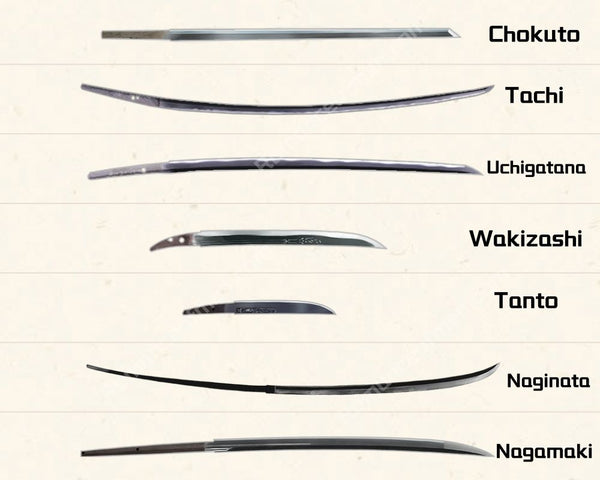What is a Long Katana Called? Common Questions and Answers
When we think of samurai or feudal Japan, one iconic image that often comes to mind is that of a curved, slender blade known as the katana. However, the katana is not just a single sword but a representative term for various types of traditional Japanese swords. In this article, we delve into the nuances of the long katana, its various types, and some common misconceptions.
Table of Content
- Understanding the Katana: More Than Just One Sword
- What is the long katana called?
- Tachi vs. Uchigatana: Size, Purpose, and Wear
- The Ōdachi: An Exceptionally Long Katana
1. Understanding the Katana: More Than Just One Sword

The term 'katana' is often used as a catch-all phrase to describe Japanese swords. Contrary to popular belief, the sword we typically imagine as the katana is more accurately termed the uchigatana. Beyond the uchigatana, Japanese swordsmithing has given rise to various other blade designs, each serving a unique purpose and cultural significance. Some of these include the tachi, wakizashi, tanto, naginata, and nagamaki etc.
2. What is the long katana called?
Now that we know there are many types of Katana, when you see a long katana usually it refers to Tachi (太刀), if the katana seems really long, it could be Ōdachi (大太刀).
To give you some idea, here is a chart of length comparison:
| Sword Type | Average Blade Length (cm/in) | Overall Length (cm/in) |
| Uchigatana | 70 cm / 27.6 in | 100-110 cm / 39.4-43.3 in |
| Tachi | 75 cm / 29.5 in | 100-120 cm / 39.4-47.2 in |
| Odachi | 90 cm / 35.4 in | Over 120 cm / 47.2 in, can be up to 200 cm / 78.7 in or more |

When you see a pair of katana (a Daisho set), usually it should be a pair of tachi & tanto, or uchigatana with wakizashi. Under this context, you can call both Uchigatana or Tachi the "long katana". We will talk about how to distinguish between the uchigatana and the tachi as they have their unique characteristics and uses.

3. Tachi vs. Uchigatana: Size, Purpose, and Wear

Both the tachi and uchigatana are revered swords with rich histories, but they differ in several ways:
Size and Shape: While both swords are long and curved, the tachi tends to be slightly longer and has more curve. Conversely, the uchigatana is usually a bit shorter with a lesser curve.
Purpose: Historically, the tachi was designed primarily for cavalry use. Its curvature and balance made it ideal for slashing while riding on horseback. The uchigatana, on the other hand, was more suited for infantry and samurai who would fight on foot. It was perfect for quick-draw and swift strikes.
How They're Worn: One of the most distinguishable differences is how they're worn. A tachi is worn suspended edge-down with the edge facing downwards, while an uchigatana is usually worn thrust through an obi (belt) with the edge facing up. This distinction played into their respective tactical uses: the tachi's downward-facing edge was ideal for horseback, while the uchigatana's upward-facing edge facilitated a rapid draw and strike from a standing position.
4. The Ōdachi: An Exceptionally Long Katana

When the term "very long katana" is mentioned, the conversation often gravitates towards the ōdachi. This enormous blade can stretch to remarkable lengths. The longest known ōdachi in history is the Haja-no-Odachi (破邪の御太刀 Great Evil-Crushing Blade), Impressively, the blade length is 345.5 cm (136 inches). The sword's total length is 465.5 cm (183 inches), and it weighs 75 kg (165 lbs), making it exceptionally large.
The ōdachi served various purposes over its historical lifespan. It was a ceremonial sword, a symbol of power, and occasionally a battlefield weapon. Due to its enormous size and weight, using the ōdachi in combat required immense strength and skill, often making it more of a symbol than a practical weapon. However, the sheer presence of the ōdachi on the battlefield would have been an intimidating sight.
5. Conclusion: Delving Deeper into the World of the Katana
The katana, in all its forms and variations, remains one of the most iconic symbols of Japanese culture and martial prowess. While popular culture has provided a specific image of the katana, understanding its intricacies, types, and historical relevance makes the journey into its world even more fascinating. As with any historical artifact, there's always more to learn, and knowing the terms could help you better design your custom Japanese swords.





















